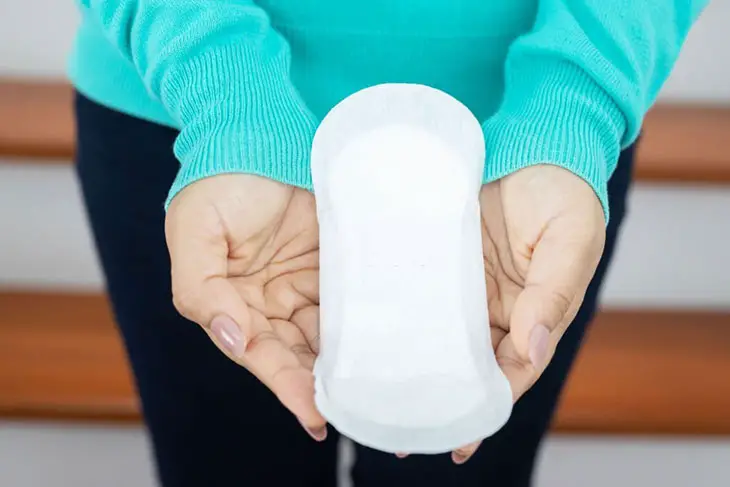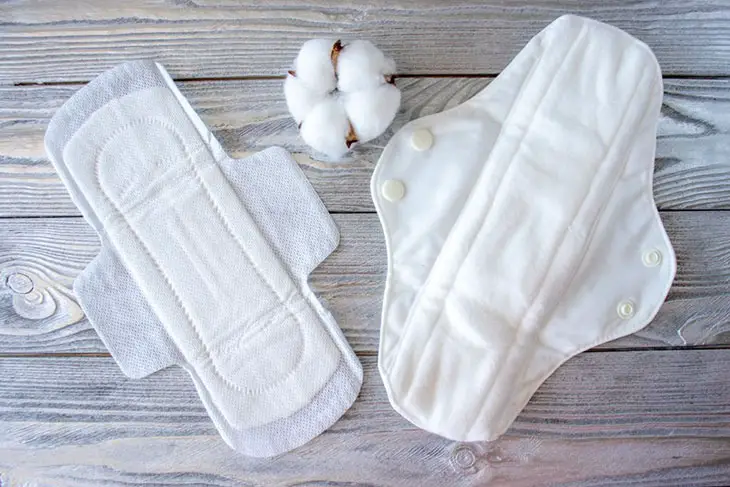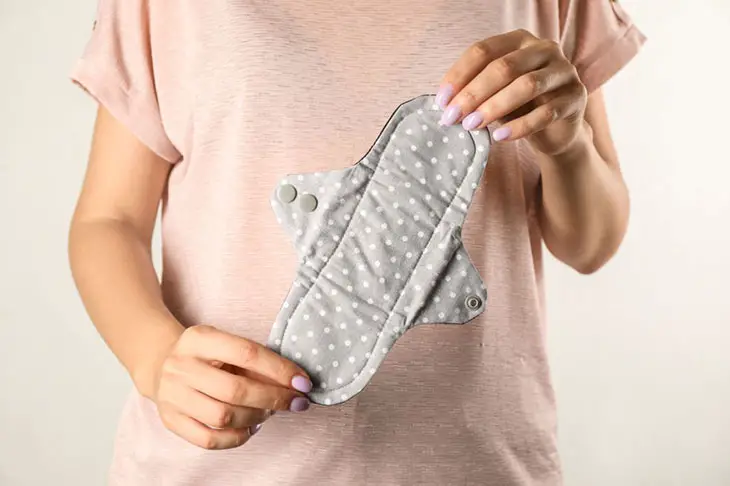There must be some reasons behind the creation of birth pads, and numerous obstetricians suggest or even force pregnant women to use pads after their laborious parturition.
So why do you need pads after giving birth?
This question will be thoroughly explained in the following section, and I also present further information about some popular pads, coupled with their characters and utilities for you to consider.
Keep scrolling down for more details!
Why Do You Need Pads After Giving Birth?

During the postpartum period, you will experience lots of bleeding that leaks from your vagina, which can dirty your clothes.
That’s why you need pads to keep everything clean and feel assured when feeding and diapering your newborn angel.
This bleeding is known as lochia, containing tissues, blood clots, and mucus from your uterus’s lining.
This body part is heavily hurt and pressurized after labor, so bleeding is apparent.
The bleeding will likely start with dark-red color and heavy textures, which will reduce after a few weeks, so you don’t need to panic too much about it.
Wearing pads is a comfortable and leak-proof protection method to alleviate the bleeding and protect you from other risks of infection.
What Are Some Types Of Pads For Pregnant Women After Their Childbirth?
There are different types of pads for women after giving birth. You must take a close look at each kind and choose which is suitable for your needs and health conditions.
Health professionals warn that wearing the wrong one causes your skin to be rashed and doesn’t prevent bleeding effectively.
What pads do you use after giving birth? Here are some popular pads that are worth your consideration.
- Classic pads are the most common on the market, and many people favor them. Yet, its design is quite conventional and lacks extra frills.
- Many people trust winged pads, especially pregnant women who are overweight or oversized. These pads provide wings on two sides, offering optimal protection against blood leakage.
- Organic pads are praised by many environmentalists thanks to their organic cotton and other natural materials. When using them, you might enjoy a smoother experience than other types.
- Reusable pads are perfect for women who don’t want to spend much money on postpartum pads. They can be washed and used for the next time. However, those pads will likely render infections if they are still dirty after cleaning.
- Disposable underwear is considered an adult diaper that is bigger than pads and offers protection from all angles. When putting it on, you also have no difficulty moving or running.
How Many Pads For Postpartum Do You Need?

After parturition, your body is still weak, and there is much bleeding from your perineum, so it is compulsory to change pads frequently.
Do I have to change my pad every time I go to the bathroom postpartum? Yes, you must do so.
However, after a couple of days, when your body begins to heal from vaginal birth and the bleeding subsides, you don’t need to change pads as often.
The frequency should be 4 to 8 times daily in the first week after pregnancy.
So, you should prepare about 30 to 60 pads to overcome the initial and heaviest week of bleeding.
The preparation should occur before you enter the labor, as you are very busy diapering your baby in the first week.
You may need fewer pads when the first week passes because the bleeding reduces.
However, I cannot give you the exact number of pads, which depends on your health conditions and care.
It would be best to have more than enough postpartum pads so there is no worry about the problem of running out.
What To Look For A Postpartum Pad?
As mentioned earlier, the bleeding will be in large amounts and heavy after childbirth, so you must purchase high-quality and comfortable pads.
Below are some criteria that a good pad must meet.
Soft
A postpartum pad must be gentle on your skin. After delivery, the skin around the perineum is very sensitive, so using a pad with a rough surface could cause rashes, itchiness, and even allergies.
The problem will become worse if you have stitches in that area.
Breathable
The pad should be breathable, allowing air to circulate around your vaginal area and bringing a comfortable experience.
Good air circulation also helps avert the growth of bacteria and prevent vulvar infection.
Absorbent
In the first days of labor, bleeding will be heavy and dense, so your pad must ensure its ability to absorb these blood pools well. Don’t forget to change your pads regularly.
Flexible
Flexibility means that the pad should fit your body and stop blood flow whenever you sit, stand, lay, or walk to feed your baby.
Supportive
The pad also helps alleviate the severe pain in your vaginal area by supporting the wound. A supportive pad won’t shift when you sleep or do physical activity.
Frequently Asked Questions

How Long Do You Need To Use Maternity Pads After Giving Birth?
While you don’t know how long your vaginal bleeding will last, you can assume it to be four weeks postpartum.
However, this heavy period is not the same for every woman. Some women experience bleeding for 6 weeks instead of a month, which is attributed to their health conditions.
Can You Use Regular Pads Instead Of Maternity Pads?
You should not use regular pads in the first few days after birth. As presented above, you will likely have profuse and heavy bleeding.
Using ordinary pads cannot offer maximum absorbency and extra protection against leaks and even causes pelvic inflammatory diseases.
On the other hand, types of maternity pads are exclusively designed to confront this problem. It is softer, longer, and more non-irritating than regular products.
When Can You Stop Wearing Pads?
You stop wearing postpartum pads when you no longer see any bleeding from the vaginal area. It may take place after four to six weeks after delivery.
Although your uterus stops bleeding, it is still weak and sensitive, so you’d better not insert anything into your perineum.
The Bottom Line
This article has provided a satisfying answer to the wonder: Why do you need pads after giving birth?
No doubt, the use of postpartum pads prevents excessive bleeding and reduces the risk of infection in pregnant women.
Thank you for your genuine support, and have a nice day!
